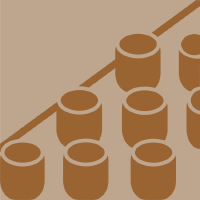Topic Editors


Sustainability in Buildings: New Trends in the Management of Construction and Demolition Waste, 2nd Volume
Topic Information
Dear Colleagues,
After the success of our first initiative, we encourage you to contribute to the Topic "Sustainability in Buildings: New Trends in the Management of Construction and Demolition Waste, 2nd Volume". This initiative aims to collect works related to the use of new sustainable construction materials, new rehabilitation and conservation techniques, new advances in the recycling of materials for their application in building, as well as new techniques and measurement processes that favour the development of sustainable construction. Contributions related to the proposed lines of research will be valued and that allow for the improvement of the management of construction and demolition waste for its application in the building sector. The main idea is to promote the development of new construction materials and new measurement techniques from different perspectives such as sustainability, materials science, measurement techniques and the development of new sensors and data collection equipment. The focus is on the rehabilitation and conservation of built heritage in order to move towards the development of sustainable cities. In addition, there is also room for other contributions related to construction, which is in line with the scope of the Sustainable Development Goals included in the 2030 agenda. Therefore, this Topic can complement existing literature on construction and demolition waste management from a multidisciplinary perspective that encourages the exchange of ideas and views. For this reason, we encourage all researchers working in areas of knowledge related to building materials, retrofitting, sustainability and energy efficiency to submit their research.
Prof. Dr. Carlos Morón Fernández
Dr. Daniel Ferrández Vega
Topic Editors
Keywords
- treatment of construction and demolition waste
- circular economy applied to the building
- clean production in the construction sector
- new eco-friendly construction materials
- technology innovation in sustainable building
- gypsum, lime, mortar, concrete, and composite materials with incorporation of CDW
- development of sensors and measurement systems applied to buildings
- energy efficiency and rehabilitation
- heritage conservation and sustainable development
- selected papers from international conference on technological innovation in building
Participating Journals
| Journal Name | Impact Factor | CiteScore | Launched Year | First Decision (median) | APC | |
|---|---|---|---|---|---|---|

Applied Sciences
|
2.7 | 4.5 | 2011 | 16.9 Days | CHF 2400 | Submit |

Buildings
|
3.8 | 3.1 | 2011 | 14.6 Days | CHF 2600 | Submit |

Heritage
|
1.7 | 2.8 | 2018 | 16.9 Days | CHF 1600 | Submit |

Materials
|
3.4 | 5.2 | 2008 | 13.9 Days | CHF 2600 | Submit |

Sustainability
|
3.9 | 5.8 | 2009 | 18.8 Days | CHF 2400 | Submit |

MDPI Topics is cooperating with Preprints.org and has built a direct connection between MDPI journals and Preprints.org. Authors are encouraged to enjoy the benefits by posting a preprint at Preprints.org prior to publication:
- Immediately share your ideas ahead of publication and establish your research priority;
- Protect your idea from being stolen with this time-stamped preprint article;
- Enhance the exposure and impact of your research;
- Receive feedback from your peers in advance;
- Have it indexed in Web of Science (Preprint Citation Index), Google Scholar, Crossref, SHARE, PrePubMed, Scilit and Europe PMC.

